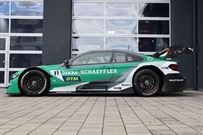Race Cars
$ POR
1997 Lola 97/T20 - SOLD
This is now SOLD. Search for similar items.
Description:
Lola Cars were the exclusive manufacturer of choice for the Indy Lights Championship from 1993 to its end in 2001. After using modified F3000 cars, a new, clean sheet design was commissioned specifically for Indy Lights competition in 1997. A carbon fiber monocoque surrounds the driver and is widely recognized as one of the safest open-wheel race cars made. Carbon bodywork, wings, floor, and diffuser are standard. The engine is a stressed member, requiring no trunions or additional bracing. All generation Lola T97/20 Indy Lights cars are the same, irrespective of build date. The original cost of a roller was $145,000. Tires were originally Firestone / Dayton 15” radials. Now the tire of choice is a tire made for Indy Lights cars by Avon. Dimensionally almost the same, only a slight ride height change during set-up was needed to accommodate the new tires. The Avon provides much more initial grip without the need to spend a lap or two trying to get the Firestones up to temperature. The Indy Lights cars have used a General Motors (Buick) production based V6 engine since the series debuted in 1986. Aluminum heads on an iron block and a rev-limited maximum RPM of 7300 allow this 4.2L mill to produce 425 reliable horsepower. The original engine builder, drag racing legend “Ohio” George Montgomery in Dayton, Ohio, still maintains many of the engines in cars racing today. A general freshening around 2000 miles usually costs under $5000, and if a new motor is required or desired, George has many to choose from for $18,000. George also has enough motors and parts that we will probably never see a shortage of parts in our lifetime! The gearbox is a five forward speed, h-pattern unit integrated into the rear end oil tank and bell housing. All internals are readily available from multiple sources. This box was over-designed to provide reliability and ease of maintenance. The car you are looking at was last used professionally by Indy Regency Racing for Cory Witherill in 2000 and 2001. After the series’ demise, the car was sold to a client of ours and run out of our Indianapolis shop, along side six other Indy Lights cars, at one time or another. The cars are now run in the vintage arena with eligibility in multiple sanctioning bodies. The car was sold and then subsequently bought back to McNamara Motorsports where it has received a comprehensive ground up rebuild. No rock has been unturned. The following is a list of the work done: Bodywork: Stripped, cracks repaired, and repainted with new fastners Tub: Stripped and repainted --- no damage found Floor: Refurbished forward floor Refurbished diffuser New front and rear skit plates Steering: rack checked and lubed Brakes: Rebuilt AP master cylinders Rebuilt AP calipers 80 miles on pads and rotors Clutch: 80 miles on carbon/carbon Tilton clutch Rebuilt throw-out with new bearing Uprights: All 4-corners rebuilt with new bearings and seals Fuel System: Refurbished fuel cell bladder New fuel cell foam New primary and secondary fuel pumps Dampers: Dynamic® three-way adjustable – completely rebuilt Radiators: Both radiators and oil cooler cleaned and pressure checked Fire System: Fresh Lifeline dual chamber bottle Battery: New Odyssey battery Engine: 80 miles on zero time Ohio George V6 Gearbox: Completely new internals --- 0-time Tripods: Crack checked and rebuilt Rod Ends: Any that were not like-new have been replaced Crack Check: All suspension pick-up points Wheels Steering Engine mounts Gearbox adapter ring All that will be needed to run the car is: New Avon Tires Bead / Foam seat Fuel This car will easily do 2:03 laps at Road America. Compare that with an IRL car a just over 2:00 per lap, and then consider the ease of maintenance and operation: doesn’t use methanol like an IRL car, has an on-board starter, and a normal pattern gearbox. When you get right down to it, an Indy Lights car isn’t really any more difficult to run than a Formula Ford or Continental! It can all be handled by two people. This car was designed to run street circuits and high-speed ovals like Michigan, so you know it is safe and durable.
Spares
- See Above






























